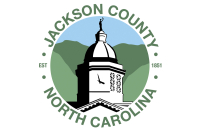Golden poster-bird
 It seems like the golden-winged warbler (GWWA) has become the non-game poster bird for everything from clearcuts to shelterwood cuts to overstory removal to seed tree harvests in our national forests. The philosophy appears to be “if you build it they will come,” see —www.srs.fs.usda.gov/compass/2014/07/03/young-forests-can-benefit-wildlife/.
It seems like the golden-winged warbler (GWWA) has become the non-game poster bird for everything from clearcuts to shelterwood cuts to overstory removal to seed tree harvests in our national forests. The philosophy appears to be “if you build it they will come,” see —www.srs.fs.usda.gov/compass/2014/07/03/young-forests-can-benefit-wildlife/.
As an avid birder and one who contracted with the USDA Forest Service for nine years doing bird point surveys across Western North Carolina on the Tusquitee, Cheoah, Pisgah, Appalachian/Toecane, French Broad and Grandfather Districts of the Nantahala and Pisgah national forests, I can assure you that no one would be happier than I to see an uptick in this beautiful little bird’s population.
But it ain’t as simple as just sawing trees down. There are a lot of competent scientists out there working on ways to help this neotropical migrant, especially in light of the U.S. Fish and Wildlife Service’s 2011 announcement that the GWWA had been petitioned for listing as an endangered species. The Golden-winged Warbler Working Group partners in our area include the Ruffed Grouse Society, The Audubon Society, Georgia Department of Natural Resources, University of Tennessee, U.S. Forest Service, Audubon North Carolina, Partners in Flight and many more. Not all cogs turn in the same direction all the time, but much information is being gathered and best management plans are being drafted.
Some of the nuances of managing for golden-winged warblers and/or other early successional habitat species were pointed out by Curtis Smalling, Audubon North Carolina’s director of land bird conservation, back in 2004 when he commented on a proposed stewardship program that would impact about 100,000 acres of national forest in North Carolina. The program’s proponents touted improvements to wildlife habitat, especially early successional obligates like golden-winged warblers. Smalling pointed out the folly of this kind of one-size-fits-all approach to creating good habitat for different species. He wrote:
“The golden-winged warbler is a good example of this complex of issues facing early successional habitat creation and maintenance. The golden-winged warbler is often cited as a potential beneficiary of the type of management proposed by the Ruffed Grouse Society. It is experiencing dramatic regional declines, is an early successional obligate and is currently rare on the landscape and is being considered for potential listing by the USFWS (Buehler et al, 2003). In Western North Carolina it is rare with probably no more than 1,000 pairs currently in the state (Smalling, unpublished data). The distribution of these breeding pairs is not uniform across the mountain region however. Some researchers feel that the populations are clustered around prime areas of suitable habitat, and these may be limited to only about five or so major core areas. A couple of these are in the Nantahala, but few are in the Pisgah. Historical land use patterns and other factors may be influencing this current distribution. They are also elevationally restricted to between 2400 and 4800 feet in elevation and have been found to be much more plentiful in western drainages (Watauga, North Fork of the New) in the northwestern portions of the mountains, and almost non-existent on the east facing escarpment areas. New habitat may need to be close to population centers before colonization occurs, at least fast enough so that suitable habitat does not age out before colonization occurs.”
Just another extreme Audubon tree-hugger, right? Well the next paragraph states: “Using this information it becomes clear that success is unlikely in-east-draining forests below 2,500 feet. Much of the Pisgah in the Harpers Creek, Lost Cove, Wilson Creek areas would be unsuitable using that criteria. Conversely, some areas of the Nantahala may be very suitable including such areas as Miser’s Creek, Cheoah Mountains or Wayah Bald. These areas have stable populations for colonization, and elevation and aspect parameters that meet the needs of the species. This type of information is necessary for all of the species of conservation concern, and unfortunately is very lacking for most.” All Smalling was imploring was, use the best available science.
Related Items
The above-mentioned Golden-winged Working Group published a “Golden-winged Warbler Status Review and Conservation Plan” detailing some of the other concerns regarding successfully creating GWWA habitat. Some of the considerations: “Places within focal areas where applying the management guidelines from this plan should be avoided include: 1) places where management and protection of other rare or imperiled resources are higher priority (e.g., national forest wilderness areas) or have conflicting management needs, and 2) places where Blue-winged Warbler populations co-occur and management for Golden-winged Warbler might hasten Blue-winged Warbler invasion of Golden-winged Warbler territories, increasing the probability for hybridization.”
And one that struck me, “Given the golden-winged warbler’s consistent population decline during the past 45 years, it is likely that contemporary land-use patterns are not generating adequate amounts of habitat to sustain stable populations. This trend appears to be especially true in the Appalachian Region where populations are declining most rapidly.”
So, if my math is right, let’s see … carry the one, yep that would be since 1970. If the clearcutting of our national forests in the 70s and 80s did nothing to enhance GWWA populations, I don’t believe the “build it and they will come” philosophy will pay off now.
(Don Hendershot is a naturalist and a writer. He can be reached at This email address is being protected from spambots. You need JavaScript enabled to view it..)









